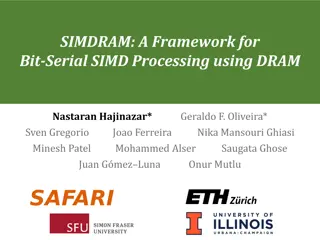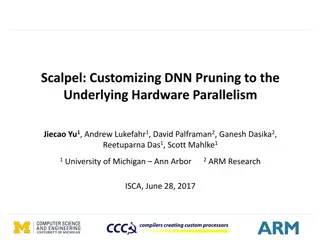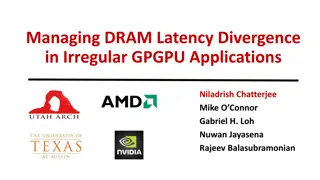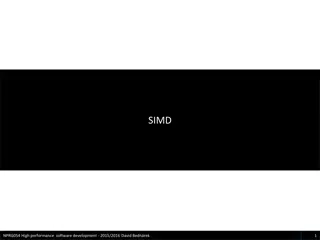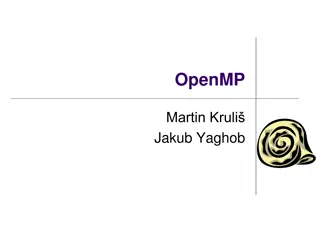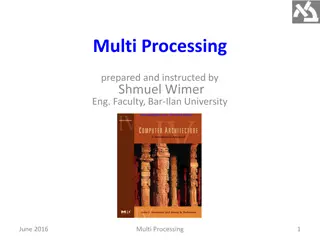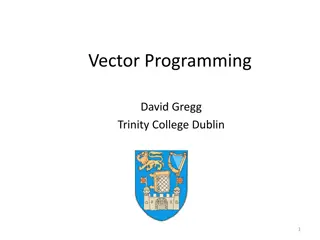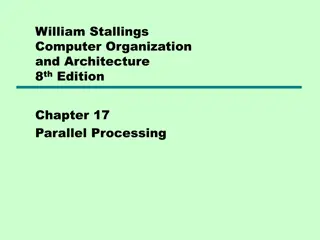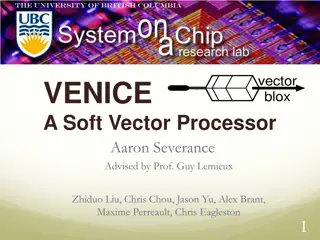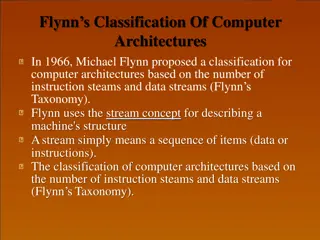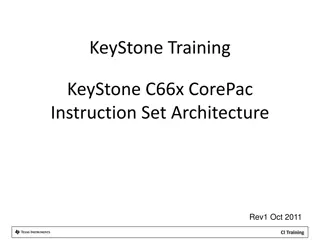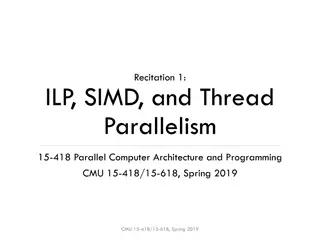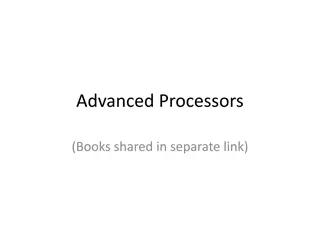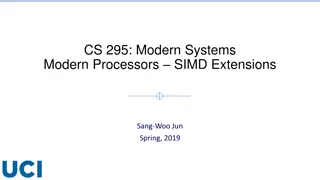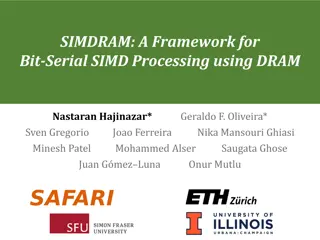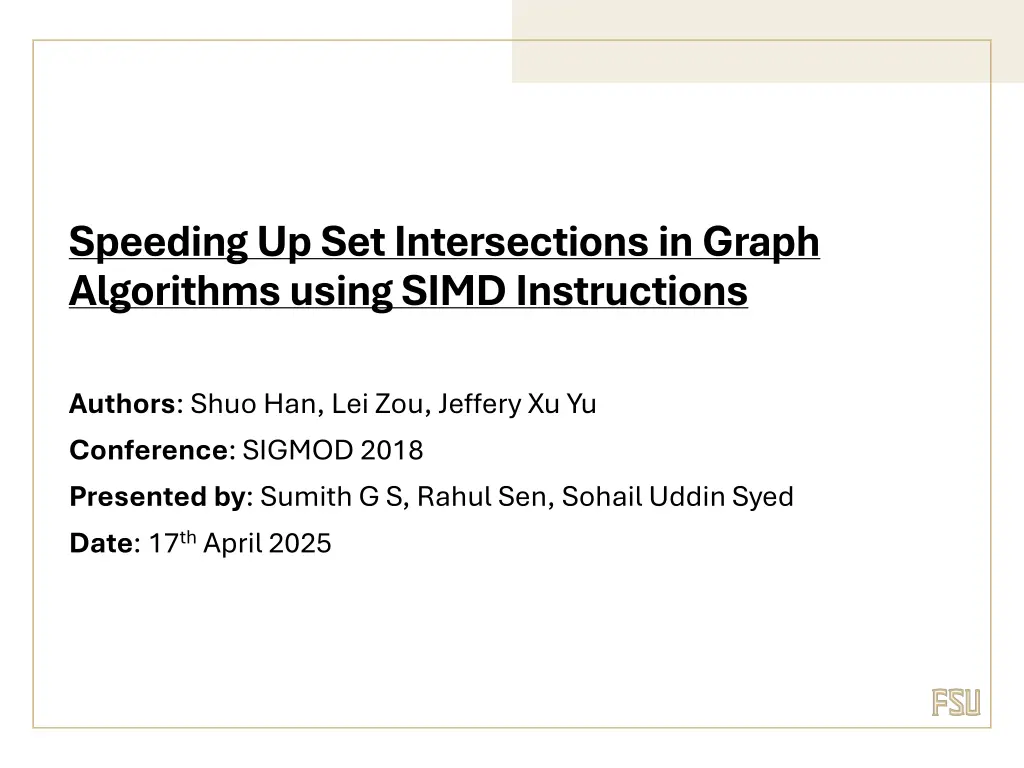
Speeding Up Set Intersections in Graph Algorithms with SIMD Instructions
"Learn how to optimize set intersections in graph algorithms by leveraging SIMD instructions, QFilter, BSR, and GRO techniques for faster comparisons and improved efficiency in processing large graphs. Enhance performance in tasks like triangle counting, maximal clique detection, and subgraph matching."
Download Presentation

Please find below an Image/Link to download the presentation.
The content on the website is provided AS IS for your information and personal use only. It may not be sold, licensed, or shared on other websites without obtaining consent from the author. If you encounter any issues during the download, it is possible that the publisher has removed the file from their server.
You are allowed to download the files provided on this website for personal or commercial use, subject to the condition that they are used lawfully. All files are the property of their respective owners.
The content on the website is provided AS IS for your information and personal use only. It may not be sold, licensed, or shared on other websites without obtaining consent from the author.
E N D
Presentation Transcript
Speeding Up Set Intersections in Graph Algorithms using SIMD Instructions Authors: Shuo Han, Lei Zou, Jeffery Xu Yu Conference: SIGMOD 2018 Presented by: Sumith G S, Rahul Sen, Sohail Uddin Syed Date: 17th April 2025
Introduction A graph is a non-linear data structure that represents relationships between pairs of objects. Graphs have varied applications in fields like social networks, biology, chemistry, transportation, and the semantic web. Some of the important graph algorithms are Triangle Counting (TC), Maximal Clique (MC), and Subgraph Matching (SM).
Whats the Problem? Graph algorithms (like finding friends in social networks, detecting triangles in connections, or searching for patterns) often need to compare lists of nodes called Set Intersections. This operation is slow, especially for big graphs, because traditional methods check every possible pair one by one. Prior work like shuffling, Branch Miss Prediction Aware Merge, and Roaring Bitmaps use rigid comparisons that fail to eliminate irrelevant elements early. Additionally, most methods don't switch strategies based on set skew or selectivity. Average Proportion of intersection with three primitive graph algorithms (scalar algorithm)
Whats the Solution? The paper introduces three key ideas to make set intersections much faster: QFilter: A smarter way to compare lists using SIMD (Single Instruction, Multiple Data). Instead of checking one pair at a time, SIMD lets the CPU compare 4 or 8 elements at once. Before comparing everything, it first checks just one byte (8 bits) of each number to quickly skip mismatches. This saves time, for example, skipping people who aren t on both lists before doing a full check.
BSR (Base & State Representation):- A compact way to store lists of nodes. Normally, each node ID is stored as an Integer(e.g., 32 bits). Instead, BSR packs multiple IDs into a single number using bit flags (like a light switchboard: each bit tells if a node is present or not). Example: If nodes 1, 3, and 5 are in a list, BSR stores this as 101010 (binary) instead of three separate numbers. GRO (Graph Reordering):- Rearrange node IDs to make BSR even more efficient. If nodes that often appear together (like close friends in a social network) are given similar IDs, their BSR storage becomes tighter and faster to compare. Think of it like organizing a messy closet putting similar items together makes finding things quicker.
How It All Works Together? Initial steps: The graph is reordered using the Graph Reordering (GRO) concept to group- related nodes. Adjacency lists are compressed into Base & State Representation (BSR) format. This makes it easy for the Qfilter algorithm to use parallelism using SIMD instructions (Single Instruction Multiple Data). At Runtime: (When Running the Algorithm) When two lists need to be compared (e.g., "Find common friends of A and B"): QFilter loads chunks of data using SIMD. It first checks just one byte to filter out mismatches. For possible matches, it fully compares and computes the intersection using bitwise operations (AND). If one list is much bigger than the other, it switches to a gallopingsearch (like a smarter binary search).
Experimental Results The below figures show how different graph reordering impacts the speed of three key graph algorithms: - Triangle Counting Scalar - basic merge, SIMD(SIMD-accelerated intersections) SIMD + BSR (SIMD acceleration + Base and State Representation)
- Maximal Clique Reordering isn't just a preprocessing step it s crucial to fully exploiting SIMD and BSR gains Maximal Clique (MC) benefits the most from reordering, due to its high intersection volume
- Subgraph Matching Best Combination: GRO + SIMD + BSR across all algorithms
Conclusion When sets have extremely different sizes (highly skewed), QFilter automatically switches to SIMDGalloping, which avoids scanning the large set exhaustively. That yields the best of both worlds for high- and low-skew scenarios. These techniques collectively cut down the runtime of key graph operations by processing multiple elements per instruction. Experiments show significant gains (up to 12 or more) on large-scale real-world datasets.
Real-World Impact and Future Work Impact: For tasks like counting triangles in a social network, this method can be up to 12 faster than traditional approaches. It s especially useful for large graphs (like Facebook s friend network or web page links). Future Work: Investigate combining data parallelism (SIMD) with thread parallelism and GPU acceleration. Exploring a real-time update from BSR has edges are added or removed.

